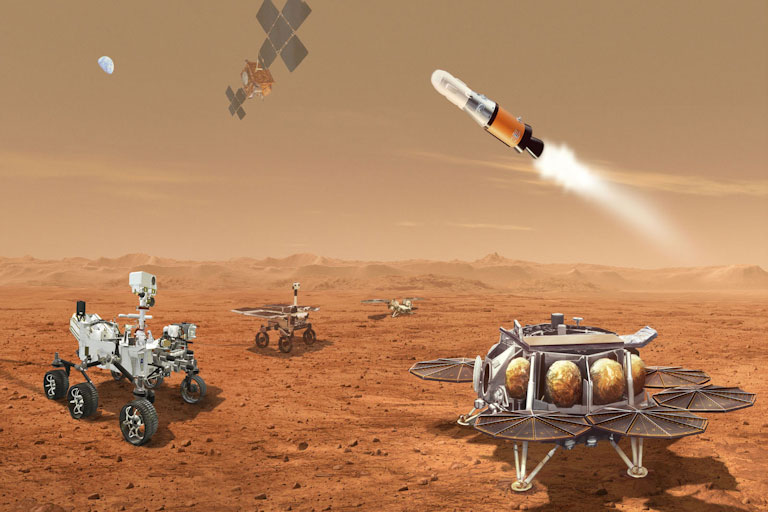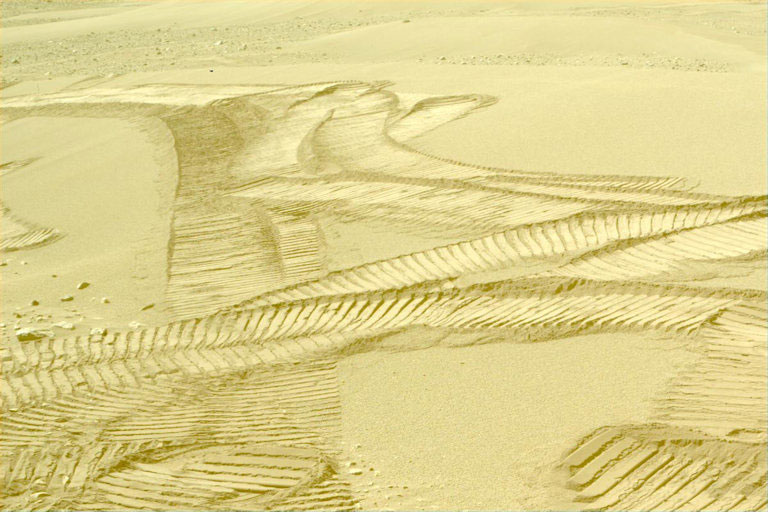News

13 Down. 25 To Go.
NASA’s Mars 2020 Perseverance rover has successfully completed over a year and half exploring the Martian surface. A big part of the mission is the collection of samples. While taking samples of material for analysis on the surface is nothing new, Perseverance is collecting samples to return to Earth. To date, 13 samples have been collected for return by a future mission.
The rover has a total of 38 spaces for storing samples. Of the 13 that have been collected, one is a sample of the atmosphere and the other 12 are rock cores. Over the remainder of the mission, the other sample tubes will be filled and sealed, awaiting pickup for return to Earth.

Mars sample return concept. (NASA/ESA/JPL-Caltech)
While plans for a return mission are focused on a 2033 launch, Perseverance continues to carry out excellent science on its own using the robotic arm to grab and store those samples. Motiv Space Systems developed the robotic arm for JPL, which contains tools that are being used not only for sample collection, but also for the search for life. The tools carried by the robotic arm are giving scientists on Earth a closer look at what the Martian environment and geology holds as space agencies prepare for future manned missions.
Additionally, a filter wheel fitted on the camera gives scientists the ability to observe various electromagnetic spectra. The wheel was supplied by Motiv, and has locations for eight different filters, which were put into place by scientists and engineers at Arizona State University and Malin Space Science Systems. By providing scientists the ability to filter out specific wavelengths of light, the filters on the wheel have proven useful for meeting a variety of science objectives.
Of course, what mission to Mars would be complete with pictures? The Perseverance rover boasts the most advanced camera system flown to the Martian surface. The Mastcam-Z has two cameras, providing stereoscopic views unlike any returned by previous missions. A key component of the camera system is the focus and zoom capability developed by Motiv. Never before has a camera on Mars been able to focus and zoom. These capabilities are not only providing scientists and engineers with closer looks at potential samples before they are collected for return to Earth, but the public can experience Mars in a new way through the images sent back from Mars.

View of the area traversed by the Perseverance rover. (NASA/JPL-Caltech)
NASA’s Perseverance rover demonstrates a suite of advanced engineering technology. Motiv Space Systems has been a key partner to NASA and JPL for meeting the science objectives of the mission by providing a large part of that engineering technology. By providing the ability to zoom and focus the cameras, we enable scientists and engineers to choose the best rocks for sampling. Our filter wheel further provides the ability to look at prospective samples at different wavelengths. And if it was not for the advanced engineering that made the robotic arm a reality, the collection of samples would not be possible.
As NASA and the ESA continue with plans to return the samples collected by Perseverance to Earth, Motiv will continue to meet the challenges of operating beyond Earth.